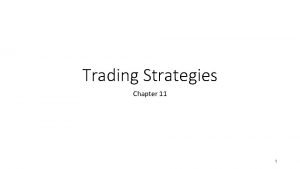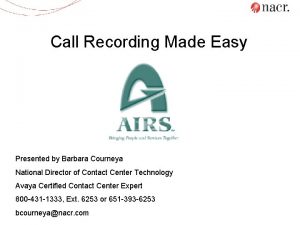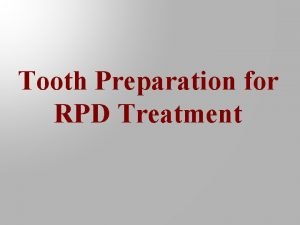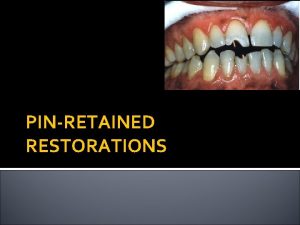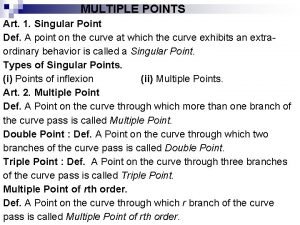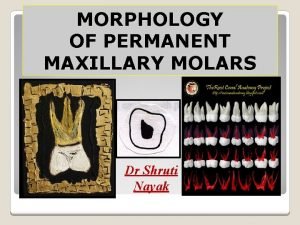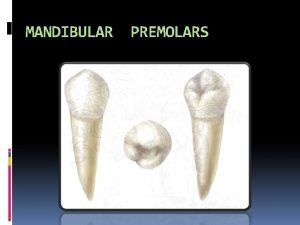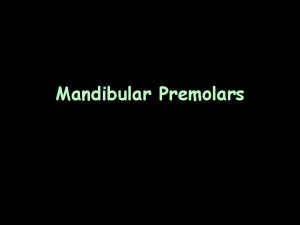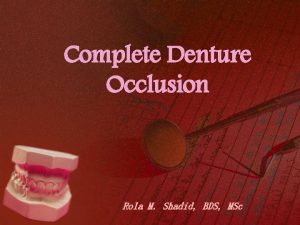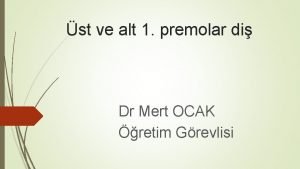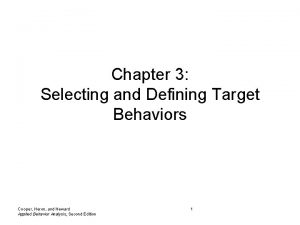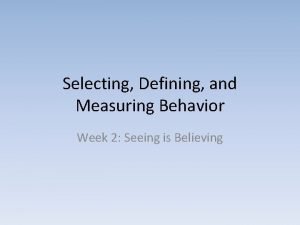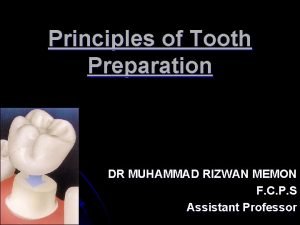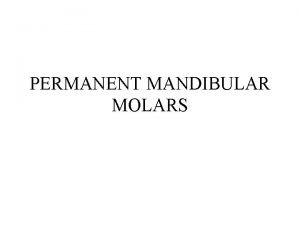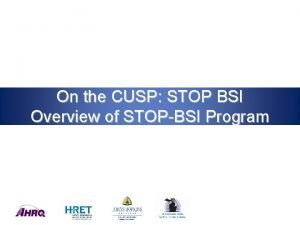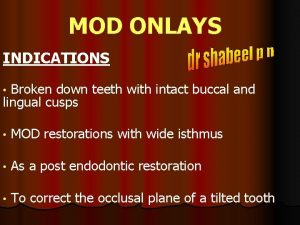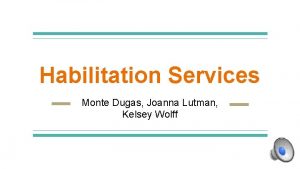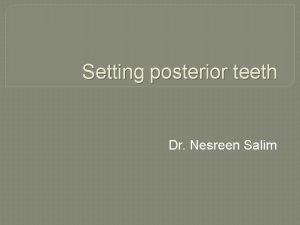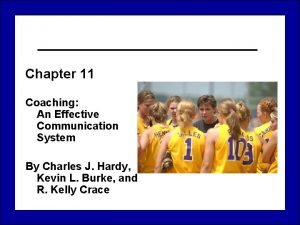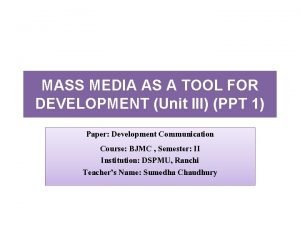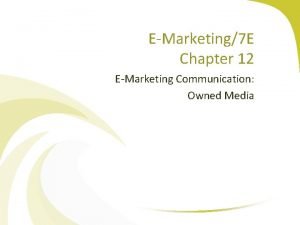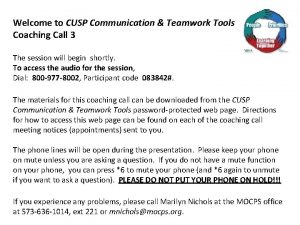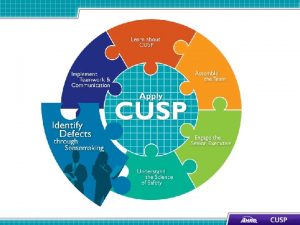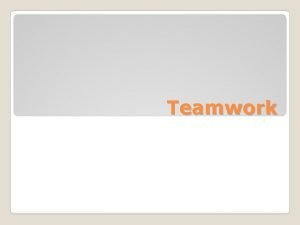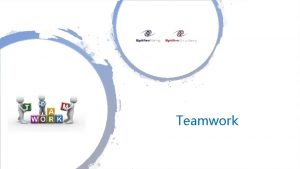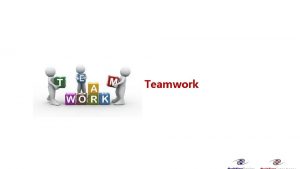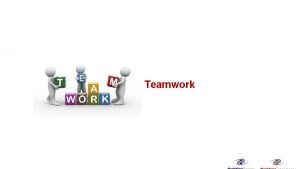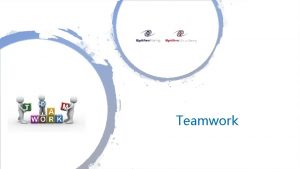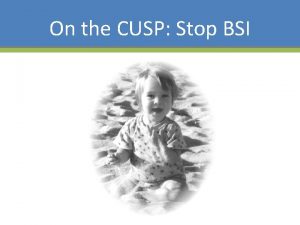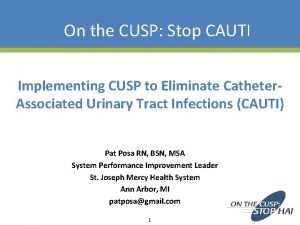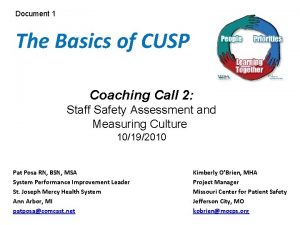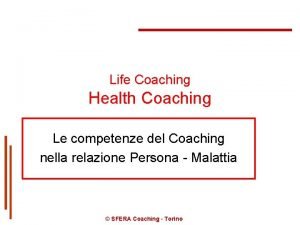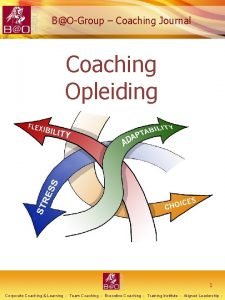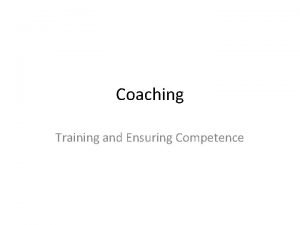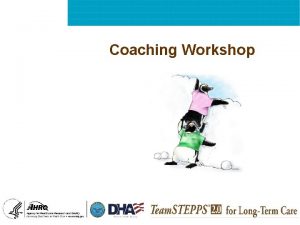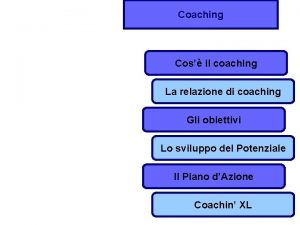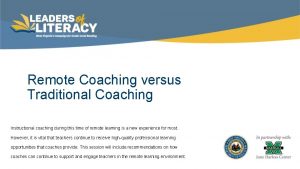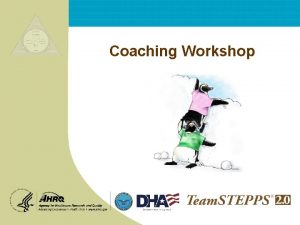Welcome to CUSP Communication Teamwork Tools Coaching Call



































- Slides: 35

Welcome to CUSP Communication & Teamwork Tools Coaching Call 1 The session will begin shortly. To access the audio for the session, Dial: 800 -977 -8002, Participant code 083842#. The materials for this coaching call can be downloaded from the CUSP Communication & Teamwork Tools password-protected web page. Directions for how to access this web page can be found on each of the coaching call meeting notices (appointments) sent to you. The phone lines will be open during the presentation. Please keep your phone on mute unless you are asking a question. If you do not have a mute function on your phone, you can press *6 to mute your phone (and *6 again to unmute if you want to ask a question). PLEASE DO NOT PUT YOUR PHONE ON HOLD!!! If you experience any problems, please call Marilyn Nichols at the MOCPS office at 573 -636 -1014, ext 221 or mnichols@mocps. org.

Document 1 CUSP Communication & Teamwork Tools Coaching Call 1: Getting Started Learning from Another Defect, Assessing Current Rounding Practices, and Exploring Structured Huddles June 21, 2011 Pat Posa RN, BSN, MSA System Performance Improvement Leader St. Joseph Mercy Health System Ann Arbor, MI patposa@comcast. net Kimberly O’Brien, MHA Project Manager Missouri Center for Patient Safety Jefferson City, MO kobrien@mocps. org

Participating Hospitals 1. 2. 3. 4. 5. 6. 7. 8. 9. 10. 11. 12. 13. 3 Barnes-Jewish St. Peters Hospital, St. Peters Capital Region Medical Center, Jefferson City Community Hospital – Fairfax, Fairfax Fitzgibbon Hospital, Marshall Jefferson Regional Medical Center, Festus Missouri Southern Healthcare, Dexter Ozarks Medical Center, West Plains Saint Louis University Hospital, St. Louis St. Luke’s Hospital, Kansas City St. John’s Mercy Hospital, Washington St. Luke’s Rehabilitation Hospital, Chesterfield St. Mary’s Health Center, Jefferson City Texas County Memorial Hospital, Houston

Documents for this Session (All can downloaded from the CUSP Communication & Teamwork Tools password-protected web site. Detailed instructions are located on each of the coaching call meeting notices/appointments emailed to you by Kimberly O’Brien) 1. 2. 3. 4. 5. 6. 7. 8. 9. 10. 11. 4 This Power. Point presentation Monthly Team Leader Checklist Sample Agenda for June/July CUSP Team Meeting MDR and Improving Teamwork Article MDR and ICU Mortality Article Lakeland Hospital Experience – daily rounds/goals SJMHS Interdisciplinary Rounds Checklist Henry Ford Health System Daily Goals Checklist Improving Communication Using Daily Goals Article Effective Communication Daily Goals Article An audio file recording of this session will be emailed to you shortly after the call today

Agenda • Describe the project organization and goals of CUSP Communications & Teamwork Tools • Brief overview of CUSP • Review Learn from a Defect • Overview of Multidisciplinary Rounds with Daily Goals • Overview of Structured Huddles • Identify next steps • Answer questions 5

CUSP Communication & Teamwork Tools Project Organization • Monthly coaching calls will be held every third Tuesday of the month, from 12 -1 pm (beginning on 6/21/2011) • Six coaching calls • Coaching calls will be recorded • Facilitated by Pat Posa, RN, BSN, MSA • Team leaders will be provided agendas and materials for monthly unit team meetings (can be modified) • Project deliverables: At end of 6 months, each unit will have implemented multidisciplinary rounds and/or huddles, and solved at least one defect – Submit Case Summary from Learning from a Defect Tool to MOCPS by November 30, 2011 6

CUSP Communication & Teamwork Tools Prerequisites & Goals • Prerequisites – The Basics of CUSP – Functioning CUSP team in place – Executive and physician support • Goals – To implement multidisciplinary rounds (with daily goals) in each participating unit – To implement structured huddles in each participating unit – To solve one defect, using the “Learning from a Defect” methodology (introduced during The Basics of CUSP) 7

Unit-Based Patient Safety Culture • Patient safety and quality happens at the local level • Build capacity at unit level to tackle multiple problems • Build capacity at the leadership level to support unit-based safety culture • Raise the quality and safety bar on the units • Surviving the tsunami! 8

Components of CUSP 1. Form a unit CUSP team with executive sponsorship 2. Measure unit culture 3. Educate staff on Science of Safety 4. Identify defects using the Staff Safety Assessment; prioritize defects 5. Learn from one defect per quarter 6. Implement team/communication tools 9

How is CUSP different? • CUSP identifies problem areas – – what staff think are impeding patient care vs. what managers/directors think are priority areas • CUSP improvement tools are designed for bedside caregivers – easy for busy staff to use – unit drives its own quality • Lean/Six Sigma/CQI – focus more on streamlining the process than identifying the problem areas • CUSP can complement other quality improvement methods – must use multiple tools! 10

Learn from a Defect • Designed to rigorously analyze the various components and conditions that contributed to an adverse event and is likely to be successful in the elimination of future occurrences. • Tool can serve to organize factors that may have contributed to the defect and provides a logical approach to breaking down faulty system issues 11

Learn from a Defect • Select a specific defect – What happened? – Why did it happen (system lenses) ? – What could you do to reduce risk ? – How do you know risk was reduced ? 12

Learn from a Defect Tool Divided into three sections: • Section 1 asks the users to identify what happened or the defect they want to investigate • Section 2 is a framework provided for the investigators to identify any contributing factors. These factors include: patient, task, caregiver, and team related, training and education, local environment, information technology and institutional environment. • Section 3 asks participants to develop an action plan with assigned responsibility for task completion and follow up dates for each item. 13

Identifying a Defect Ø AHRQ HSOPS results Ø Staff safety assessment—how will the next patient be harmed? Ø Non-compliance with a core measure Ø Event/incident reports Ø Issues identified on Executive patient safety rounds 14

Learning from Defects Tool 15

CUSP Communication & Teamwork Tools Interventions ØMultidisciplinary Rounds with Daily Goals ØStructured Huddles 16

Multidisciplinary Rounds with Daily Goals – What is it? • A strategy to assemble the patient care team members to review important patient care and safety issues and improve collaboration on the overall plan of care for the patient • Improve communication among care team and family members regarding the patient’s plan of care • Goals should be specific and measurable • Documented where all care team members have access • Checklist used during rounds prompts caregivers to focus on what needs to be accomplished that day to safely move the patient closer to transfer out of the ICU or discharge home • Measure effectiveness of rounds—team dynamics, communication, quality measure compliance, LOS 17

Evidence For Impact Of MDR Rounds • Research studies on the effect of structured interdisciplinary rounds show: – Earlier identification of clinical issues – More timely referrals – Improved ratings by nurses and physicians on teamwork, communication and collaboration. • Research also indicates variable effects on LOS and cost, with some studies showing improvement and others having no impact. Improving teamwork: impact of structured interdisciplinary rounds on a medical teaching unit. O'Leary KJ, et. al, Journal Of General Internal Medicine [J Gen Intern Med], ISSN: 1525 -1497, 2010 Aug; Vol. 25 (8), pp. 826 -32; PMID: 20386996 (Document 4 of your materials for this coaching call) 18

The Effect of Multidisciplinary Care Teams on Intensive Care Unit Mortality Arch Intern Med Feb 22, 2010 • Retrospective cohort study (using state discharge data from Pennsylvania Health Care Cost Containment Council) • • 19 112 hospitals Non-cardiac, non-surgical ICUs 30 day mortality Looked at 3 types of multidisciplinary care models • multidisciplinary care staffing alone • intensivist physician staffing alone • interaction between intensivist physician staffing and multidisciplinary care teams

The Effect of Multidisciplinary Care Teams on Intensive Care Unit Mortality Arch Intern Med Feb 22, 2010 Association Between Intensivist Physician Staffing and 30 -Day Mortality for All Patients Variable Model 1: multidisciplinary care staffing alone – No multidisciplinary care – Multidisciplinary care OR (95% CI) P Value 1 [Reference] 0. 84 (0. 76 -0. 93) . 001 1 [Reference] 0. 84 (0. 75 -0. 94) . 002 1 [Reference] 0. 88 (0. 79 -0. 97) 0. 78 (0. 68 -0. 89) . 01. 001 Model 2: intensivist physician staffing alone – Low intensity – High intensity Model 3: interaction between intensivist physician staffing and multidisciplinary care teams – Low intensity+ no multidisciplinary team – Low intensity + multidisciplinary team – High intensity + multidisciplinary care 20

Multidisciplinary Rounds with Daily Goals Challenges and Opportunities • Should be done in ICUs and all units in hospital • Hard initiative to implement, especially if you have an open unit and/or no intensivists or in non-ICU area – Standardize the structure and process for all units – Benefits seen even if physician can not attend consistently or at all – Second rounds should be done in afternoon—include at least physician and bedside nurse • Evaluate if goals for day have been met; readjust if necessary • Identify if patient can be discharged (or transferred ) the next day and if so, what needs to be accomplished • Focused first on defining daily goals and recording those either on the white board in the room or on a sheet of paper • Then standardize rounds—who should attend and what is discussed • Implemented checklist or nursing objective card 21

Multidisciplinary Rounds with Daily Goals Steps to Implementation 1. Commitment by all that MDR with daily goals is a strategy that will be implemented to improve communication and patient outcomes 2. CUSP team takes on initiative—identify if there any additional team members needed 3. Evaluate current rounding process 4. Identify gaps between current process and what you want it to look like 5. Define the standard work of rounds, roles and responsibilities of each member and develop checklist and goal process 6. Define metrics to evaluate MDR 22

Standardized Work Paradigm Old Paradigm - I know you’ll be able to figure it out. Just get it done the best way you can. New Paradigm - In order to have consistent results we must do things the same way every time. 23

Standard Work System • Standardized Work is a system for achieving a stable baseline for a process in order to systematically improve it. • Standardized Work Systems are the basis for Continuous Improvement. “What you permit, you promote” “We deserve what we tolerate” 24

Current State Assessment Results of this assessment should be entered into Survey Monkey by July 8 th using this URL: http: //www. surveymonkey. com/s/Z 3 KVYSQ What is the state of rounds on your unit? 1. Describe the structure of the participating unit(s). For example, the type of unit (i. e. ICU, Med Surg, Ancillary), whether the unit is open or closed, whether or not the unit has intensivists or hospitalists, how many beds the unit has, etc. 2. Are rounds currently held on the participating unit(s)? 3. How often are rounds held? 4. Who usually attends rounds? 5. What are the roles of each member? 6. Where do rounds usually take place? 7. Is there a defined structure/process for rounds? If so what is it? Or does it depend on who is running them? 8. Are daily goals part of the rounding structure/process? 9. How have rounds made a difference during the past year in improving the performance on your unit? 10. What is the major barrier for multidisciplinary round implementation on your unit? 25

Patient Daily Goals Form (Document 6 of Coaching Call Materials) 26

Daily Goal Sheet 27

Daily Goal Sheet (continued) 28

Nursing Card (see Document 7 of the Coaching Call materials – SJMHS Interdisciplinary Rounds Checklist) VAP Delirium Sepsis 29

Structured Huddles • Enable teams to have frequent but short briefings so that they can stay informed, review work, make plans, and move ahead rapidly. • Allow fuller participation of front-line staff and bedside caregivers, who often find it impossible to get away for the conventional hour-long improvement team meetings. • They keep momentum going, as teams are able to meet more frequently. Use this strategy to begin to recovery immediately from defects---IE: falls, sepsis and daily to focus on unit outcomes 30

Components Metric 1: Quality/Safety Metric 2: Patient Satisfaction Metric 3: Operations Daily Critical Communications Information Ideas in Motion How to do it? • Beginning or mid shift • 5 minutes • Lead by member of unit leadership team 31

SICU Huddle Board 32

CUSP Communication & Teamwork Tools Next Steps • Multidisciplinary Rounds – Complete Current State Assessment (See Slide 25) – Submit answers through Survey Monkey: http: //www. surveymonkey. com/s/Z 3 KVYSQ – Due by Friday, July 8 th • Learning from a Defect – Identify next defect to solve – Make any additions/deletions to team membership • Structured Huddles – Review the concept with unit leadership and CUSP team, gather questions – Questions will be answered/discussed during Coaching Call 2 on July 19 th • CUSP Team Agenda (see Document 3 of Coaching Call Materials) – Choose next defect to take through the Learning from a Defect Tool – Review multidisicipnary rounds slides; complete current state assessment – Review structured huddle slides; get feedback/questions from CUSP team and unit leadership for next Coaching Call – Ensure that concepts of Multidisciplinary Rounds and Structured Huddles are vetted by executive sponsor for unit and VPMA/CMO 33

We Are On a Continuous Journey • We have toolkits, manuals, websites, and monthly calls to learn from and with each other. • Your job is to join the calls, share with us your successes and more importantly the barriers you face. • Commit to the premise that harm is untenable. 34

Questions? 35
 Poem for team
Poem for team Covered call payoff diagram
Covered call payoff diagram Stock options terminology
Stock options terminology Gartner call recording magic quadrant
Gartner call recording magic quadrant Supporting cusp
Supporting cusp Rest seat
Rest seat Horizontal overlap of posterior teeth
Horizontal overlap of posterior teeth Pin retained restoration
Pin retained restoration A double point is called cusp of tangents at this point are
A double point is called cusp of tangents at this point are Transverse ridge mandibular first molar
Transverse ridge mandibular first molar Mesiolingual developmental groove is seen in
Mesiolingual developmental groove is seen in Transverse ridge mandibular first premolar
Transverse ridge mandibular first premolar Lingualized occlusion indications
Lingualized occlusion indications Monoplane occlusion advantages
Monoplane occlusion advantages Occlusogingival length
Occlusogingival length Balanced occlusion definition
Balanced occlusion definition Alt 1. premolar
Alt 1. premolar Definition of target behavior
Definition of target behavior Frequency behavior data sheet
Frequency behavior data sheet Circumferential tie in endodontics
Circumferential tie in endodontics Shoulder vs chamfer
Shoulder vs chamfer Difference between maxillary and mandibular first premolar
Difference between maxillary and mandibular first premolar Mandibular molar
Mandibular molar Cusp line
Cusp line Proximal ditch
Proximal ditch Difference between habilitation and rehabilitation
Difference between habilitation and rehabilitation Plunger cusp
Plunger cusp Anteroposterior compensating curve
Anteroposterior compensating curve Welcome welcome this is our christmas story
Welcome welcome this is our christmas story Coaching in effective communication
Coaching in effective communication Sewing tools measuring tools
Sewing tools measuring tools Role of media in development ppt
Role of media in development ppt Communications mix
Communications mix E marketing communication tools
E marketing communication tools E marketing communication tools
E marketing communication tools E marketing communication tools
E marketing communication tools

